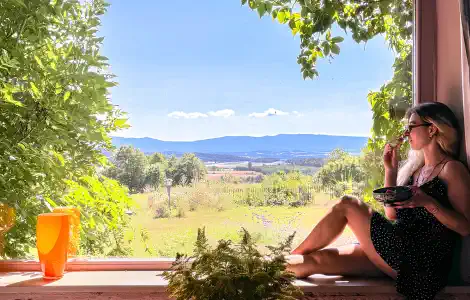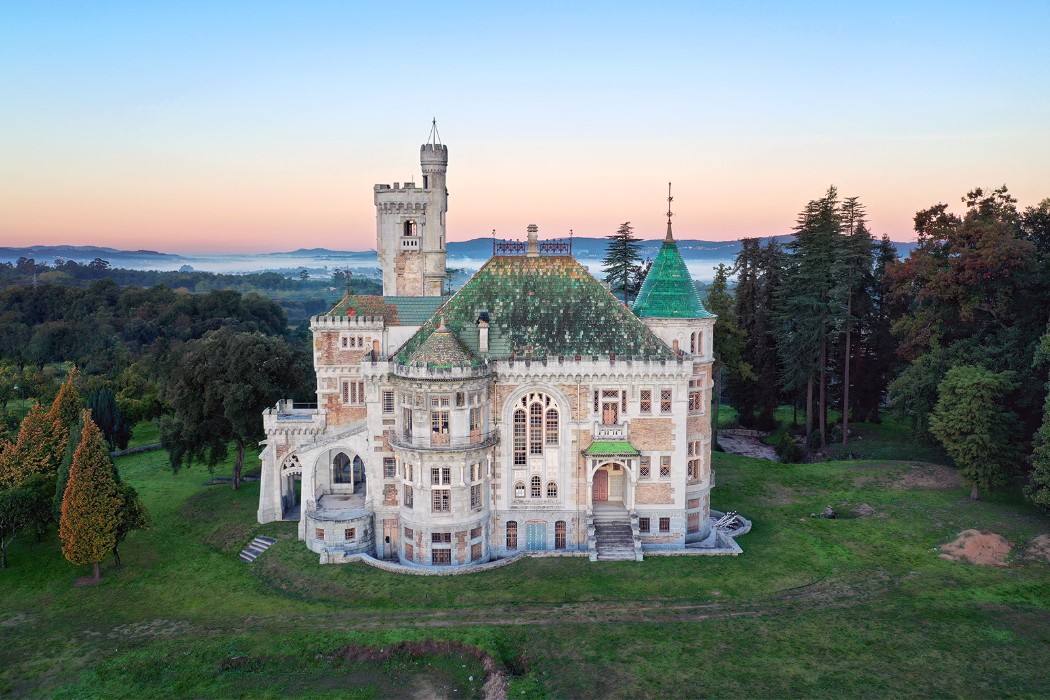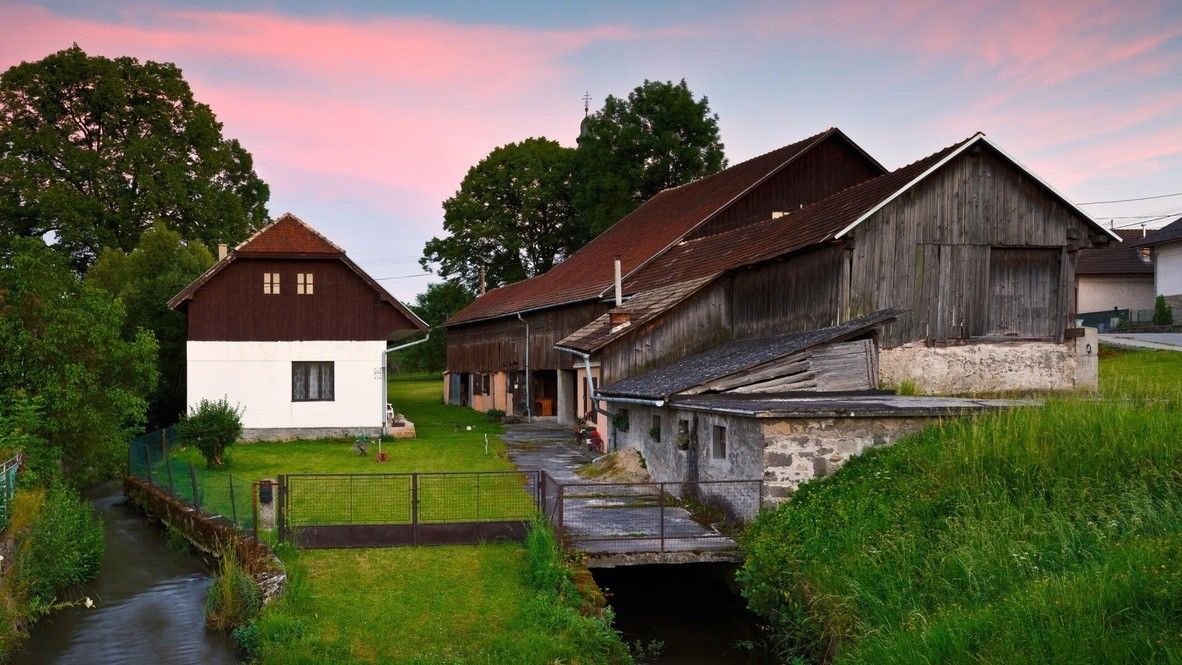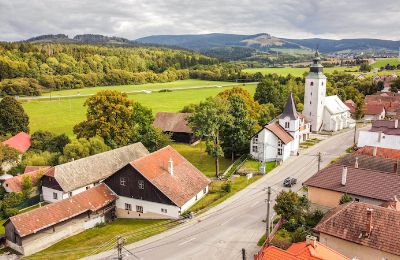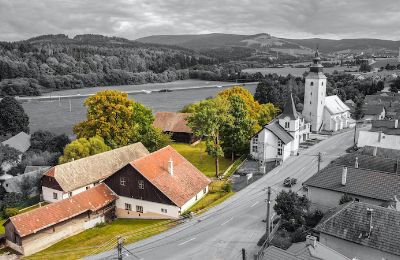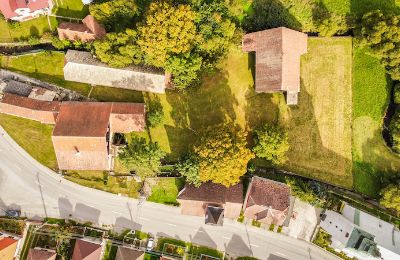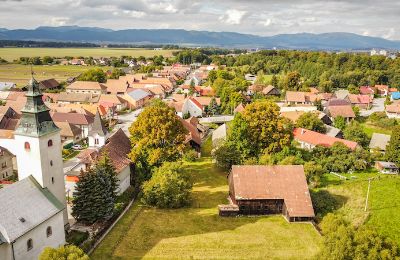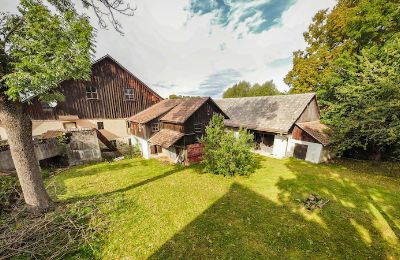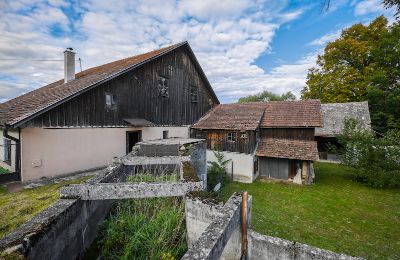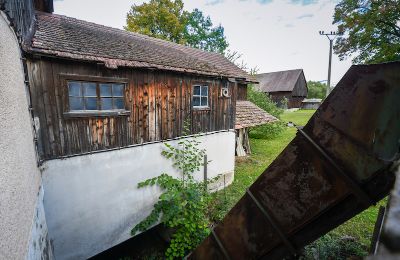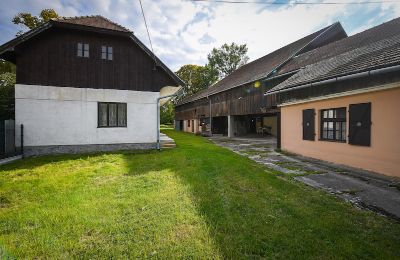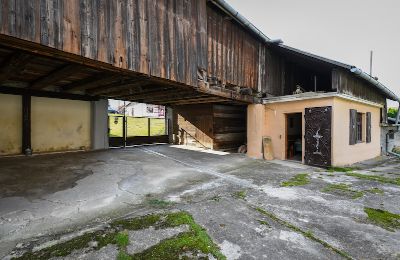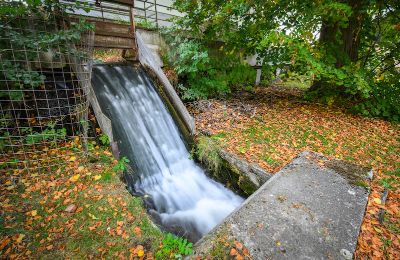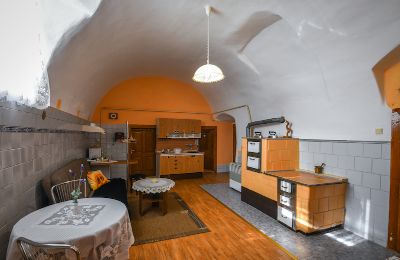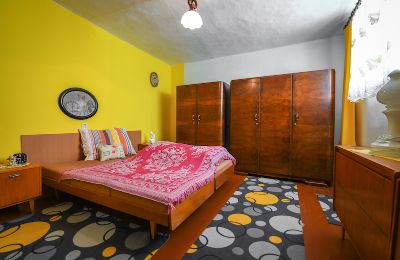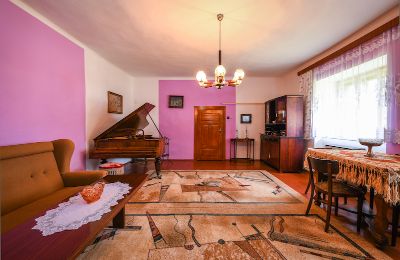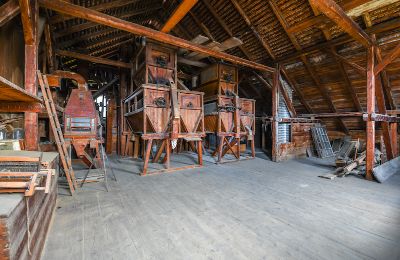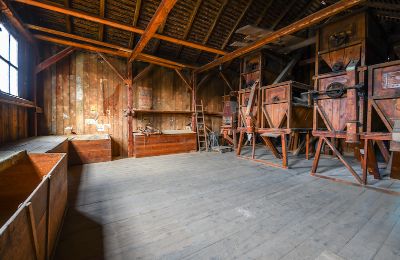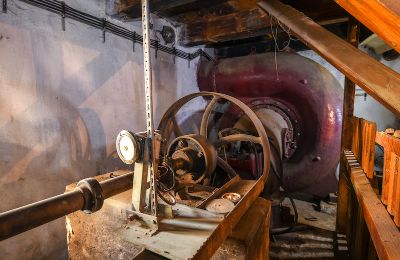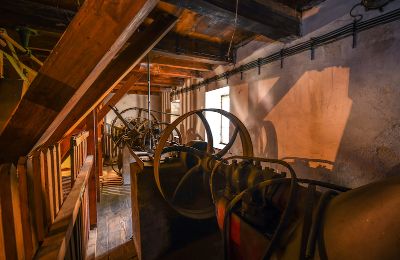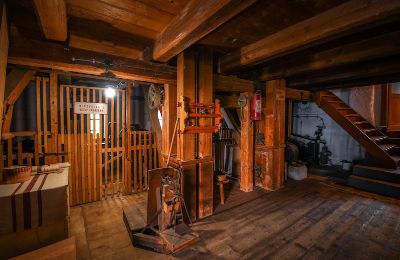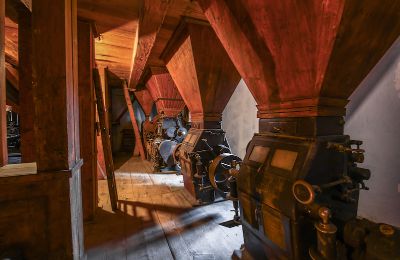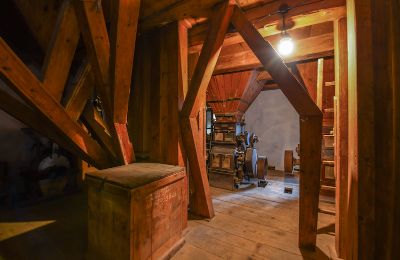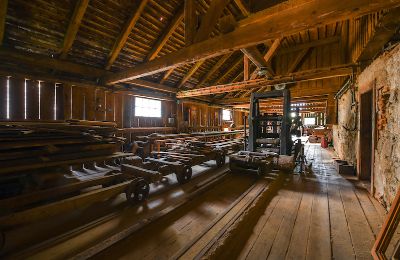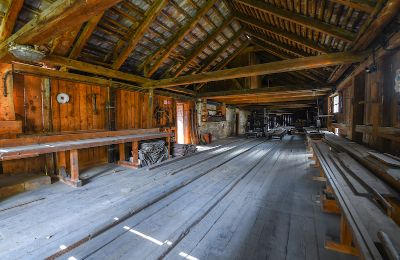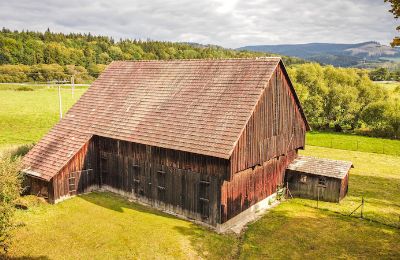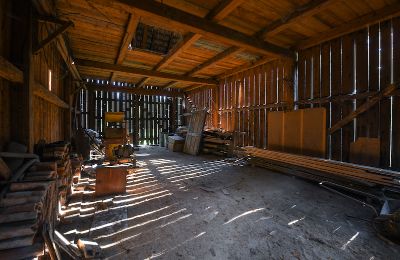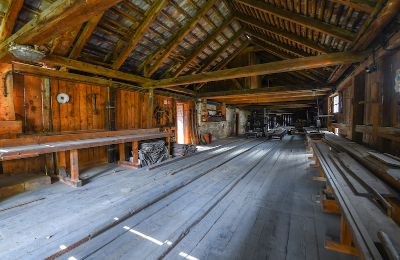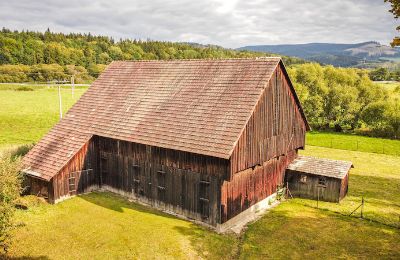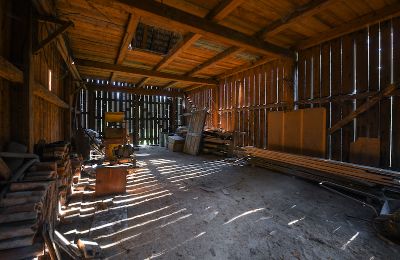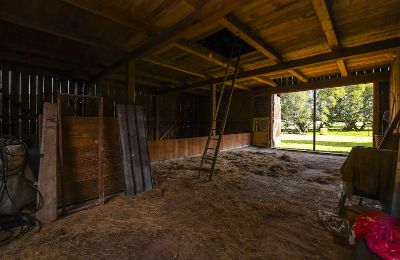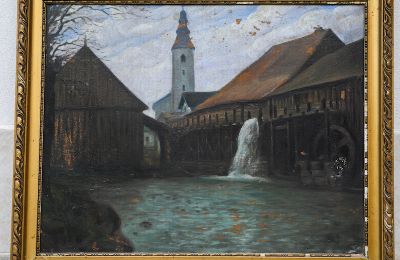Price negotiable!
Nestled in a picturesque valley called Turiec, near the far end of the small spa town of Turčianske Teplice and surrounded by the wild and majestic nature of the Veľká and Malá Fatra mountains, lies a prominent estate on the Žarnovica stream. Behind its gate, a spacious courtyard awaits, featuring a barn, a mill building with living quarters, a coachman’s house, and nearly 5,000 m² of land.
Breathe new life into it.
This property holds a historically rich story within the walls of its water mill, which began its journey as early as the 16th century and has continued, with necessary but sensitive modern interventions, to this day. Its story weaves together factual records, dramatic historical developments, and the resilient people who lived and worked here. Step back with us into the world of traditional milling and craftsmanship. Within this estate, you will find nearly intact and well-preserved milling technologies, including millstones, a “Francis” turbine, sluices, as well as a sawmill, a circular saw, and a hydroelectric power system. Even now, without major modifications, the property offers a captivating exposition of milling and related historical artifacts, awaiting passionate enthusiasts.
History in Brief
The first written mention of the building dates back to the 16th century. In 1569, local miller and sawyer Matej Holeš informed the town of Kremnica about the local economic conditions of the mill and sawmill. It can be assumed that the mill and saw were already operational for some time by then. Historical records indicate that the first mills in the Turiec region were established in the 13th century, leaving open the possibility that this mill may also date back to that period.
The mill and sawmill remained fully operational until 1953 under the care of miller and sawyer Rudolf Žiak. The Žiak family had lived and worked here since 1932.
Originally, the water mill was powered by a waterwheel, which has not survived and was later replaced by a turbine. The mill we present is situated on the Žarnovica stream, which flows into the Turiec River. Integral to its operation were hydraulic constructions such as the weir and sluices that directed water to the millrace, ending in a spillway with gates, which remain nearly intact. In the 19th century, the waterwheel was replaced with a turbine, later powered by its own hydroelectric plant. The power facility remains functional but has been out of operation since 1999.
PROPERTY DESCRIPTION
The estate consists of the following parts:
1. Miller’s Residence – Mill Building with Living Quarters and Sawmill
The buildings are connected into a single complex, allowing passage between them via interior spaces. The mill is built into a hillside. The southwest façade faces the road and appears as a single-story building from this side, while the northeast façade is more imposing, with the ground floor visible as it cuts into the slope. This side also features the outlet of the millrace to the waterwheel. The original waterwheel exists only in period photographs documenting the mill’s former appearance. The primary building material is stone, with a tiled roof.
The residential part of the mill was used as a living space until 2020 and underwent minor modernization that preserved the building’s historical character. Upgrades included partial window replacement, installation of a bathroom and WC, and kitchen flooring and tiles. Heating is provided by gas heaters and a traditional tiled stove. Water comes from the municipal supply. Electrical wiring runs throughout all three parts. The property is not connected to a sewer system.
Built-up area: 550 m²
Usable area: 400 m² (residential portion: 87 m²)
Ancillary spaces (storage, cellars): 190 m²
Layout of the Mill and Mill Building
Ground floor: hallway with technical room and technology (turbine, millrace), vaulted kitchen with tiled stove, living room, bedroom, bathroom with WC, pantry. External access to storage rooms (6), technical rooms (4), and cellars (5). One room is reserved for power plant technology.
Usable area: 450 m²
First floor: corridors, technical room with milling technology, workshop – sawmill and circular saw, terraces and a shed formerly used for storing wood
Usable area: 435 m²
Second floor – attic: technical room with hoppers, additional room
Usable area: 182 m²
Milling Equipment – Past and Present
The mill building is preserved in its original maintained state and spans three floors. The original setup included a three-stone mill with three top-water wheels (3.7 m diameter), a saw powered by a lower-water wheel with a circular saw, two separate sluices, and a turbine (1 m diameter). The milling system is one of the oldest surviving stone-grinding setups in the Turiec region.
The mill was upgraded between 1918–1948 with industrial machinery, steel and cast-iron equipment. The three roller mills installed then continue to serve the primary function of grinding grain. Water power was replaced with an electric motor, increasing efficiency by up to 75%.
To restore the mill to operational status, the millrace would need to be refilled, and the turbine blade replaced.
Current Equipment Includes:
Power system: One Francis turbine with horizontal shaft (800 L/s capacity), millrace (671 m total length)
Driven machinery: 38 cm diameter millstone, two roller mills
Additional equipment: huller, aspirator with huller, reformer with one roller, 1.5 kW dynamo
Sawmill equipment: free-running gang saw with 12 blades, circular saw (50 cm diameter)
Technical reports and hydrotechnical calculations are available on request.
2. Coachman’s House
Originally built in 1900 as an agricultural building and stable, it was fully renovated in 1988, repurposed as a residential unit with a garage, technical room, and wood storage. The living area includes two rooms, a kitchen, bathroom with WC, pantry, and hallway. Municipal water and independent electricity supply were installed. No sewer connection exists; a wastewater treatment solution is recommended. Heating is via a solid-fuel stove with radiators. Windows are original wood; construction is stone/brick with a tiled roof.
Built-up area: 128 m²
Residential: 64 m²
Technical: 64 m²
3. Spacious Courtyard, Garden, and Barn
These areas have evolved over time. Historically, water flowed across the courtyard, now diverted into the Žarnovica stream that surrounds the estate. Walking from the mill building and coachman’s house into the garden, you encounter a striking 250 m² all-wood barn with a 10 m ridge height, standing against the mountainous backdrop. A small waterfall effect is created by the descending water from the stream’s channel.
The garden can be accessed via a separate entrance from the public road, offering potential for an independent building plot.
Courtyard with buildings: 1,800 m²
Garden including barn footprint: 3,200 m²
LOCATION
The water mill is located in the Dolná Štubňa district, part of the spa and administrative town of Turčianske Teplice in the Upper Turiec region. Formerly an independent and prosperous village with a rich history, the spa town was named Štubnianske Teplice until 1948.
The mill is within walking distance of essential infrastructure: Protestant and Catholic churches, cultural center, grocery store, and pub.
Nearby towns: Martin – 25 km, Banská Bystrica – 35 km, Žilina – 50 km, Kremnica – 18 km, Prievidza – 35 km.
Potential Uses and Opportunities
This water mill is a unique property in the Upper Turiec region, offering untapped potential and irreplaceable historical value. Even if its original industrial function cannot be fully restored, the estate is suitable for conversion into a family residence, farm, guesthouse, studio, gallery, museum, educational or cultural center, or a combination of these uses.
For further details including pricing, contact the real estate agent: Mgr. Janka Baťková Oravcová, +421 918 695 305, janka.batkova@targetreal.sk
Arrange your viewing soon.

